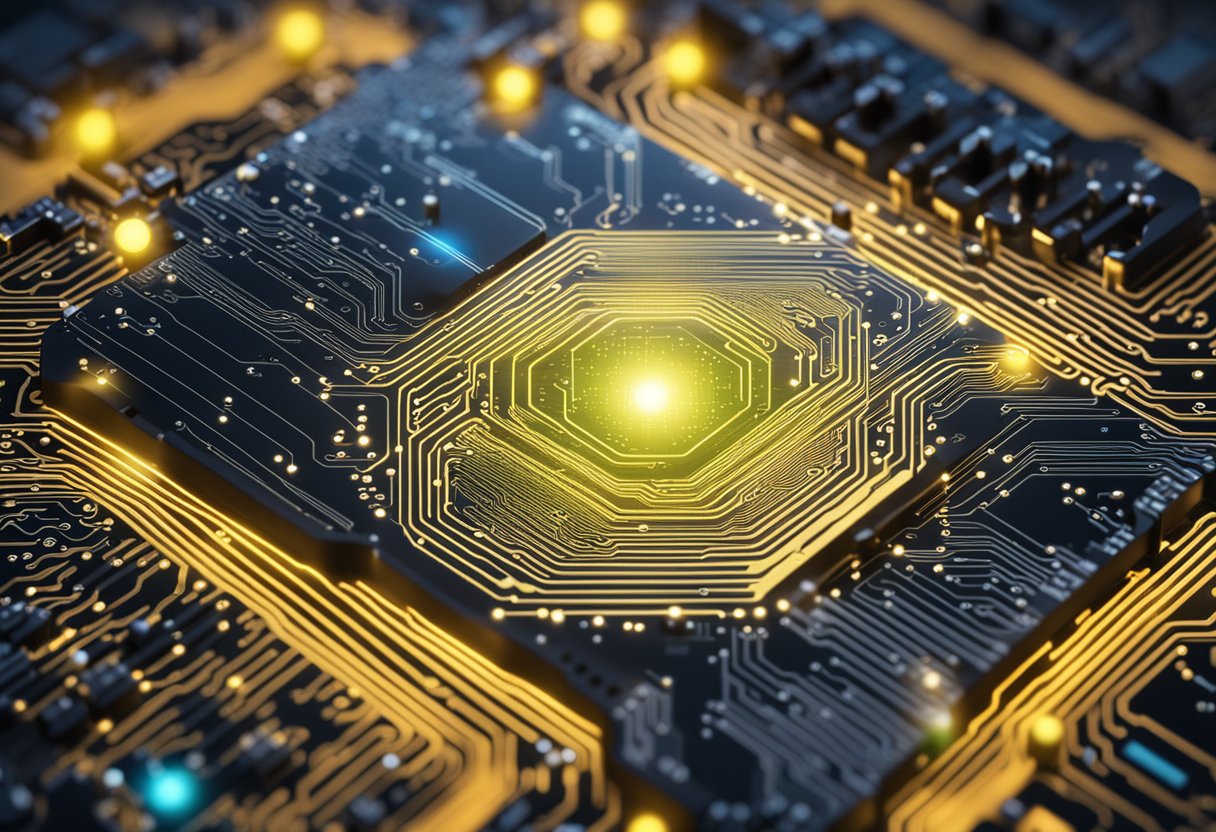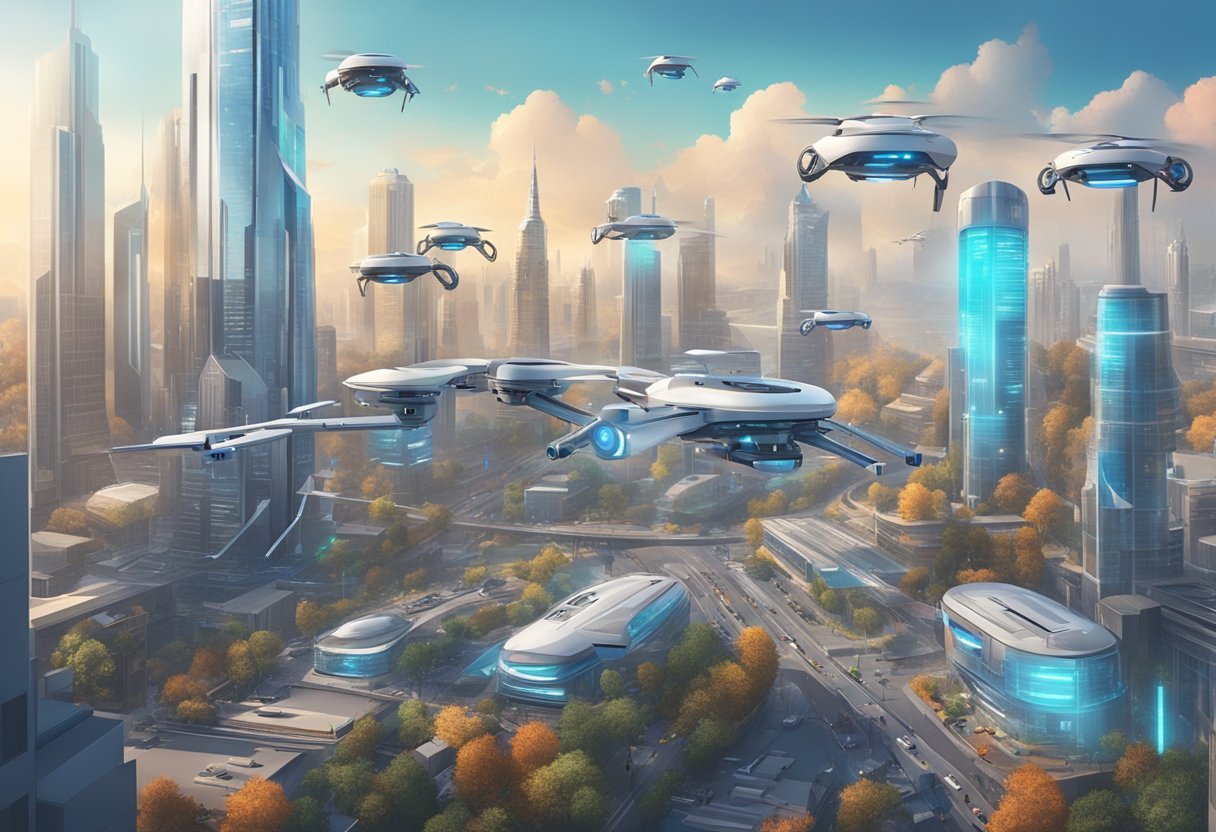Welcome to the intriguing world of Artificial Intelligence (AI), a field reshaping how we live, work, and interact. But what exactly is AI? At its core, AI is a branch of computer science dedicated to creating systems capable of performing tasks that typically require human intelligence. These tasks range from recognizing speech, making decisions, understanding languages, and recognizing patterns in data.
The scope of AI is progressively expanding as technology advances. From chatbots that provide customer service to sophisticated algorithms that diagnose diseases, AI’s applications are vast and transformative. Its integration into daily life and industries worldwide is reshaping the way they operate, offering new opportunities and efficiency gains. However, alongside its many benefits, AI also raises ethical questions and concerns, such as data privacy and the potential for job displacement in certain sectors.
Key Takeaways
- AI enables machines to perform tasks that require human-like cognitive functions.
- AI applications range from simple tasks to complex problem-solving across various industries.
- As AI evolves, it presents both opportunities and ethical challenges to consider.
Understanding AI
Artificial Intelligence (AI) encompasses machines designed to perform tasks that typically require human intelligence. It’s grounded in the science of reasoning, language, and problem-solving. AI ranges from computer systems that can perform simple tasks to those aiming for artificial general intelligence, a state where machines possess reasoning and consciousness akin to humans.
History of AI
The quest for creating intelligent machines began as a part of science fiction but solidified as an academic discipline in the mid-20th century. Mathematician Alan Turing, known for the Turing Test, was a pioneer in conceptualizing the notion of intelligence in machines. He proposed the idea of a digital computer executing tasks similar to human cognition.
AI Theory and Science
AI is anchored in strong theoretical underpinnings, including statistics, mathematics, and computer science. From Alan Turing’s foundational theories to current developments in algorithms and neural networks, AI is both a practical and theoretical discipline. AI Theory concerns itself with questions of machine consciousness and the replication of human-like problem solving.
Types of AI
Artificial intelligence can be classified into two primary types: Narrow AI and Artificial General Intelligence (AGI). Narrow AI, or weak AI, refers to systems designed to handle specific tasks such as voice recognition or computer vision. AGI, on the other hand, denotes machines that are capable of understanding and learning any intellectual task that a human being can.
Building Blocks of AI
The building blocks of AI include data, algorithms, and computing power. Data fuels machine learning models; algorithms provide the mechanisms for pattern recognition and learning; and computing power speeds up these processes. Key technologies underpinning AI are machine learning and deep learning, which enable advanced capabilities like natural language processing and perception.
Applications of AI
Artificial Intelligence, or AI, has infiltrated many aspects of daily life and industry, bringing about significant advancements through machine intelligence and automation. From chatbots that assist in customer service to intricate systems that enable self-driving cars, AI’s applications are diverse and transformative.
Everyday Use
In everyday life, people interact with AI often without even realizing it. Devices like Siri and Alexa incorporate AI to interpret and respond to voice commands, making technology more accessible. Additionally, streaming services such as Netflix and YouTube leverage machine learning algorithms to personalize content recommendations, enhancing user experience by tailoring search results and viewing suggestions.
Industry and Healthcare
Within the industry, AI drives advancements in robotics and automation, increasing efficiency and safety. In healthcare, machine intelligence supports diagnostic systems and predictive analysis, improving patient outcomes. AI applications in healthcare include interpreting medical imagery and managing patient data, which are tasks that rely on both supervised learning, where the system is trained on labeled data, and unsupervised learning, understanding data without explicit guidance.
AI in Learning and Adaptation
AI’s ability to learn and adapt through various methods of machine learning is crucial for its success. Supervised learning allows systems to predict outcomes based on historical data, whereas unsupervised learning works on identifying patterns and relationships in data sets. Reinforcement learning is particularly remarkable in scenarios where an AI must make decisions with long-term consequences, such as in gameplay or navigation for autonomous vehicles. AI art and language models reflect this adaptive learning, evolving with each interaction and input to create and communicate more effectively.
Through these applications, AI continues to refine the interface between the digital and physical realms, bringing forward new possibilities and reshaping how tasks are performed across different spheres of human activity.
Future of AI and Ethical Considerations
The evolution of artificial intelligence (AI) is rapidly shaping the future, intertwining with ethical considerations that impact its integration into society. As AI technology advances, it promises to revolutionize efficiency and decision-making but raises critical questions about ethics and public trust.
AI and the Public
AI’s trajectory indicates an inevitable growth in public domains, influencing everyday life from health diagnostics to financial advice. The public anticipates AI systems that exhibit social intelligence and common sense, features that are currently in development. These advancements aim to improve societal functions, but they also highlight the need for public engagement and awareness to build trust in AI technologies.
For instance, generative AI, capable of creating content that mirrors human creativity, introduces questions about authenticity and originality. As these technologies advance, they may alter job markets and privacy norms, requiring transparent communication to manage the public’s expectations and concerns.
Ethics and AI
The ethical implications of AI are vast, encompassing its design, implementation, and broader societal impacts. Ethical AI concerns range from biases in decision-making algorithms to the delegation of critical choices to machines. Researchers employ a multifaceted approach to examine these issues, incorporating principles like accountability, fairness, and transparency in AI systems.
Considerations such as algorithmic fairness highlight the importance of making AI’s decision-making processes understandable to humans and preventing discriminatory outcomes. These considerations have shaped frameworks and guidelines to govern AI development, like those discussed in the article Artificial intelligence for a better future, to ensure a future where AI aligns with ethical standards and societal values.
Conversations with AI
Conversations with artificial intelligence have transformed how humans interact with technology, blending sophisticated language models and interactive design to emulate social intelligence.
Language Models
Artificial intelligence relies heavily on language models like GPT-4 and BERT to facilitate conversations that resemble those between humans. These models use natural language generation to craft responses. For instance, GPT-4, or the Generative Pre-trained Transformer 4, has been trained on a wide variety of internet text to produce text that mirrors human speech patterns in a conversational context.
AI in Interaction
Engaging with AI has become more natural due to advancements in speech recognition and chatbots. These systems understand spoken language and provide appropriate responses, making technology like virtual assistants and AI-driven customer service tools more relatable. Such interactions reflect a blend of technical prowess and the subtleties of social intelligence, illustrating AI’s growing role in daily communication.



